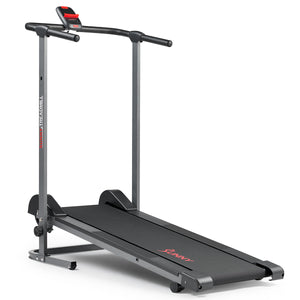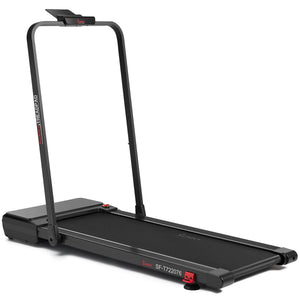Welcome to your ultimate guide to treadmill basics! If you’re new to exercise or looking to incorporate more cardio into your routine, the treadmill can be a fantastic option. It’s versatile, user-friendly, and effective for all fitness levels. In this comprehensive guide, we’ll cover everything you need to know to get started on your treadmill journey, including setup, workout tips, safety precautions, and more.
Understanding the Treadmill
Before you hop on, it’s essential to familiarize yourself with the treadmill itself. There are countless type of treadmills to choose from, including manual, motorized, and hybrid models. For beginners, motorized treadmills are the most common as they offer adjustable speed settings and incline features.
Key Components of a Treadmill
- Belt: The moving surface you walk or run on. It should feel smooth and consistent. A good quality belt will also have some cushioning to reduce impact on your joints.
- Console: This displays important information like speed, distance, time, and calories burned. Some consoles also offer built-in workouts and heart rate monitors.
- Incline Adjustment: Many treadmills allow you to simulate hills, making your workout more challenging. Adjusting the incline can help engage different muscle groups and increase calorie burn.
- Emergency Stop: A critical safety feature that stops the machine if you lose your balance. Always familiarize yourself with its location and functionality.
- Handrails: Useful for support, especially if you’re just starting out. However, try to avoid relying on them excessively, as it can alter your form.
Setting Up Your Treadmill
Choosing the Right Treadmill
When selecting a treadmill, consider factors like space, budget, and features. If you plan to use it at home, ensure it fits your available space.
If you have extra wiggle room in your budget, consider investing in a treadmill with additional features such as:
- Bluetooth Connectivity: Syncing with fitness apps can help you track progress and set goals.
- Built-in Workouts: Pre-programmed routines can keep your workouts varied and interesting.
- Heart Rate Monitors: Many treadmills now come equipped with sensors that allow you to monitor your heart rate directly from the console.
Placement
Choose a flat, stable surface for your treadmill. Ensure there’s enough space around it for safety, especially in case of a fall. Good ventilation is also essential, as you may work up a sweat!
If you’re placing the treadmill in a small space, consider models that fold for easier storage. Also, ensure it’s in a well-lit area where you feel comfortable exercising.
Getting Started: Basic Settings
- Familiarize Yourself: Before starting your workout, spend some time getting to know the controls. Practice starting and stopping the treadmill and adjusting the speed and incline. This will help you feel more confident when you begin exercising.
- Warm-Up: Always begin with a warm-up. A 5-10 minute gentle walk at a slow speed (1-2 mph) prepares your body for more intense activity. This can help prevent injury and improve your overall performance.
Your First Treadmill Workout
Set Your Goals
It’s crucial to set realistic and achievable goals, whether that’s weight loss, building endurance, or simply establishing a consistent routine. Start with manageable targets, like walking for 20 minutes, and gradually increase the duration and intensity.
Consider SMART goals—Specific, Measurable, Achievable, Relevant, and Time-bound. For instance, instead of saying, “I want to run more,” you could set a goal like, “I will run for 30 minutes, three times a week, for the next month.”
Sample Beginner Workout Plan
- Week 1
- Days: 3 times a week
- Duration: 20 minutes
- Intensity: 1-2 mph (walking pace)
- Incline: 0%
- Week 2
- Days: 3 times a week
- Duration: 25 minutes
- Intensity: 2-3 mph (brisk walking)
- Incline: 1-2%
- Week 3
- Days: 3-4 times a week
- Duration: 30 minutes
- Intensity: 3-4 mph (jogging)
- Incline: 2-3%
- Week 4 and Beyond
Listen to Your Body
Pay attention to how you feel during and after your workouts. It’s normal to experience some muscle soreness as you begin, but sharp pain or discomfort is a sign to stop and reassess your form and intensity.
Consider keeping a workout journal to log your feelings and progress. This can help you identify patterns and areas for improvement.
Tips for Effective Treadmill Workouts
- Posture: Stand tall, engage your core, and keep your shoulders back. You can use the handrails for balance assistance, but avoid leaning on the handrails, as this can alter your natural walking or running form. Your arms should move naturally at your sides.
- Foot Placement: Ensure your feet land softly on the belt to reduce impact. This can help prevent injuries and improve your efficiency.
- Breathing: Maintain a steady breathing rhythm. Inhale through your nose and exhale through your mouth, especially as you increase intensity. If you find yourself gasping for air, slow down!
- Hydration: Keep a water bottle nearby and take sips as needed to stay hydrated during your workout. Dehydration can lead to fatigue and reduced performance.
- Music and Entertainment: Listening to music or podcasts can make your treadmill workout more enjoyable and help the time pass quickly. Create a motivating playlist to keep you energized.
Safety Precautions
Safety is paramount when using a treadmill. Here are some essential precautions to keep in mind:
- Start Slow: If you’re new, begin with walking before progressing to jogging, running, or high incline. Your body needs time to adapt to the new activity.
- Use the Emergency Stop: Familiarize yourself with the emergency stop feature and use it if you feel unsteady. Some treadmills have a safety key that you should clip to your clothing.
- Wear Proper Footwear: Invest in good-quality athletic shoes that provide support and cushioning.
- Stay Focused: Avoid distractions like your phone or watching TV while on the treadmill. Staying focused helps prevent accidents. If you need to check your phone, pause the treadmill first.
- Avoid Overexertion: It’s important not to push yourself too hard, especially in the beginning. If you feel dizzy or excessively fatigued, stop and rest.
Incorporating Treadmill Workouts into Your Routine
Consistency is Key
Establishing a regular workout schedule will help you form a habit. Aim for at least three sessions per week, gradually increasing frequency and intensity. Consider scheduling your workouts just like any other important appointment.
Mix it Up
To keep your workouts interesting, vary your routines. Alternate between walking, jogging, and incorporating intervals—short bursts of higher intensity followed by recovery periods. This not only keeps things fresh but also helps prevent boredom.
Interval Training Example- Warm-up: 5 minutes at 2 mph
- Interval 1: 1 minute at 5 mph
- Recovery: 2 minutes at 2 mph
- Repeat: 5 times
- Cool down: 5 minutes at 2 mph
Combine with Strength Training
Pairing treadmill workouts with strength training can enhance your fitness results. Aim for two days of strength training each week, focusing on major muscle groups. This combination improves overall fitness and aids in weight management.
Sample Strength Training Exercises:
- Bodyweight Squats: 3 sets of 10-15 reps
- Push-Ups: 3 sets of 5-10 reps (modify by using knees if necessary)
- Lunges: 3 sets of 10 reps per leg
- Planks: Hold for 20-30 seconds, 3 sets
Consider scheduling strength training sessions on non-treadmill days or right after your treadmill session.
Track Your Progress
Tracking your workouts can motivate you and help you stay accountable. Consider keeping a fitness journal or using a mobile app to log your sessions, noting time, distance, and how you felt.
Progress Indicators
- Distance: As you become more comfortable, track how far you can walk or run in a set time.
- Speed: Gradually increase your speed over time.
- Endurance: Notice how your body responds over weeks—are you less fatigued? Can you maintain your pace longer?
Celebrate your milestones, no matter how small, to maintain enthusiasm. Set rewards for yourself when you reach specific goals, like new workout gear or a massage.
Common Mistakes to Avoid
- Overdoing It: It’s easy to get excited and push yourself too hard. Listen to your body and take rest days as needed. Progress takes time!
- Neglecting Form: Poor posture can lead to injury. Focus on maintaining proper form throughout your workout. Consider asking a trainer for a quick form check if you’re unsure.
- Skipping Warm-Ups and Cool-Downs: These are essential for preventing injury and aiding recovery. Always include 5-10 minutes of gentle walking at the beginning and end of your workout.
- Not Fueling Your Body: Ensure you’re eating a balanced diet that supports your fitness goals. Fuel your body with nutritious foods before and after workouts.
Troubleshooting Common Issues
Boredom
If you find yourself bored on the treadmill, try changing the scenery. If you're at a gym, move to a different treadmill. At home, place your treadmill in a location where you can watch TV or look out a window.
Plateauing
If you stop seeing progress, consider altering your routine. Increase your speed, change the incline, or add interval training to keep your body challenged.
Discomfort or Pain
If you experience any discomfort or pain, especially in your joints, stop exercising. Check your footwear and treadmill settings. If pain persists, consult a healthcare professional.
Take the First Step
The treadmill is a fantastic tool for beginners looking to improve their fitness levels. By understanding the basics, setting realistic goals, and following a structured plan, you can enjoy a rewarding and effective workout experience. Remember to listen to your body, prioritize safety, and most importantly, have fun!
With dedication and consistency, you’ll be well on your way to achieving your fitness goals. Whether you’re walking, jogging, or running, the treadmill can be a significant part of your fitness journey. So, lace up your shoes, hit that start button, and get moving—your health and well-being are worth it!



























Add Your Name & Email
Please enter your name and email to continue.We won’t display your email publicly.